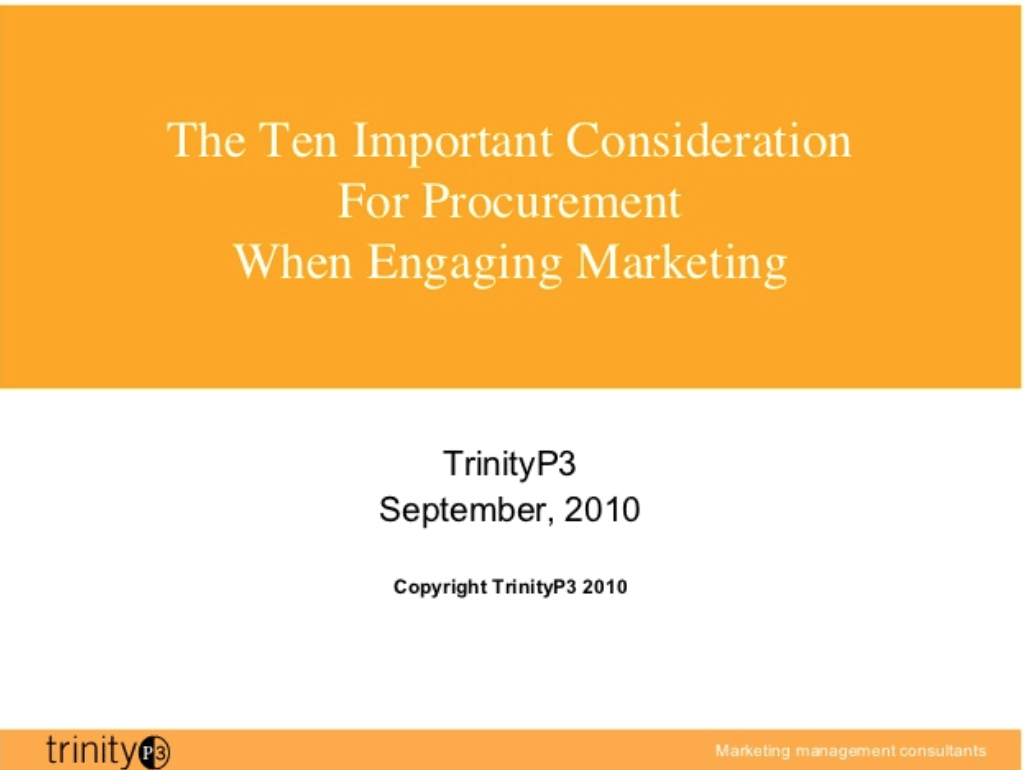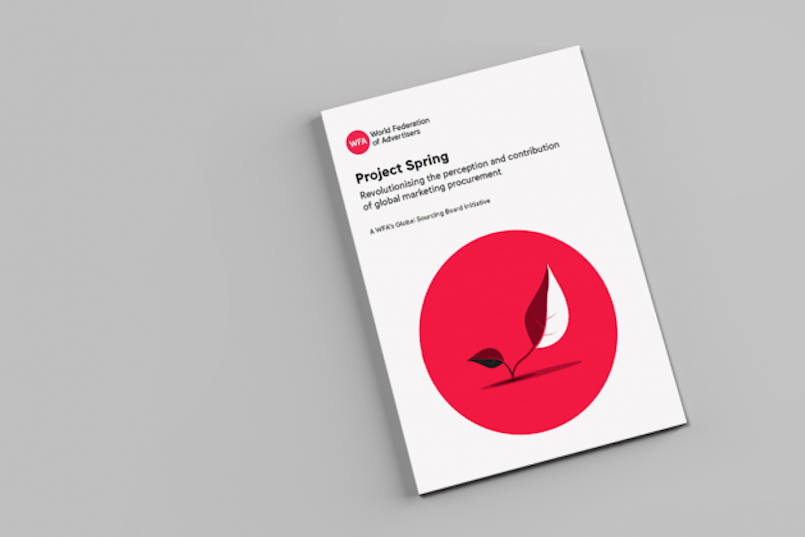The rise of procurement in the marketing category is well documented. But there are some recurring issues where this engagement often goes awry. In the past few years I have noticed three main mistakes that often lead to poor outcomes for all. I am sure there are possibly more and I would love to hear about them, but these are the main ones noted.
The issue is not with procurement alone.
Often marketers and even their agencies do not have the breadth of view of their own category to understand the underlying issues and so procurement can find themselves navigating a potentially mysterious and hostile environment based on unsubstantiated facts and unwritten rules driven by emotion and ego.
View more presentations from Darren Woolley
1. Do not focus on spend data alone as this is not where the value is found.
2. Marketing can tell you the symptoms but this is rarely the real issue.
3. Respect the relationships but be willing to question them.
There are more points in the presentation above, which I have provided on SlideShare. I actually prepared this for Darren Whalen MCIPS at Vodafone Hutchison Australia at his request last year and it has been popular and recently published on the First 5000 website.
Lets look into these in more detail…
1. Do not focus on spend data alone as this is not where the value is found.
Time and time again procurement will rely on spend data on their system to provide insights into the activity and determine the size of the opportunity. The problem with this is three fold:
a. Often marketers do not code the expenditure against the right spend codes and so we see situations where sponsorship, printing and other expenses can be placed against media because this is usually a large number and so easily lost.
b. Spend represents turnover to the agency and not revenue as often there is a sizeable component of the spend that is passed on to third parties. In the case of media again, a $100 mill spend may only represent a $2 mill revenue for the media agency and possibly only a $200,000 profit if any.
c. Spend is not volume of work or outcomes, it is simply the spend and rarely does the system provide insights into what was produced or delivered. It is like knowing the total of your credit card bill but not what you purchased so how can you possibly determine value.
2. Marketing can tell you the symptoms but this is rarely the real issue.
In my 12 years since founding TrinityP3 I have found that marketers will want to discuss the problems and not actually identify the underlying issues. Usually the conversation will go along the lines of “My agency is too slow, non-creative, not proactive, too expensive or all of the above and I need to find a new agency”. But what has caused the agency to suddenly behave this way? What has changed? And what are the causes? Simply changing the agency will cause disruption, consume resources internally and in the end the problem will still arise if the problem is actually within the organisation.
So getting to the bottom of this is more important than simply trying to cure the symptom. It appears some procurement people take this short-cut approach as a way to developing the relationship with marketing and positioning themselves as a useful partner, but the outcome is invariably flawed.
3. Respect the relationships but be willing to question them.
Relationships are very important to marketers and should be respected as a strong relationship between a marketer and their supplier can deliver intangible and tangible benefits to the organisation. The caveat here is that it is an open and transparent relationship.
We have seen time and again new CMOs and Marketing Directors put their incumbent agencies up for review within the six months following their appointment only to select the agency that they previously worked with in what appears to the industry to be a sham procurement process.
Invariably the marketer does this because:
a. It is seen as a quick and visible way of putting their stamp on the position
b. They have a preferred supplier they “like” to work with.
The question for procurement is to challenge if the process is justified beyond simply ego-aggrandisement and if the cost of this process is justified by the new arrangements.
As I said, I am sure there are possibly more and I would love to hear about them. What are some lessons and considerations you have found when procurement engages the marketing space?
Let me know in the comments below.





2 thoughts on “3 most common mistakes made by procurement when engaging with marketing”
I think traditionally procurement people are trained and expected to do cost savings a lot. Anyway, modern procurement professionals try very hard to break away from traditionally role.
Ben, I think you are right, but the challenge for most procurement people in the marketing space is being able to define either quality or quantity to be able to calculate value.
1. Quantity – because most financial systems only record spend and not the associated type or volume or complexity of work delivered for that cost. Also because marketers appear more focused on budget than work volume, which they leave to the agency. And it can be hard to get marketers to commit to a volume of work going forward.
2. Quality – because there is a hesitancy on both the marketer and the agency side to commit to a measure of quality being contribution to effectiveness. And if left to a subjective evaluation by the buyer, while legitimate, does not have any obvious financial value.
If procurement focused on helping marketers define value and not simply cost then this would work so much better.
Comments are closed.